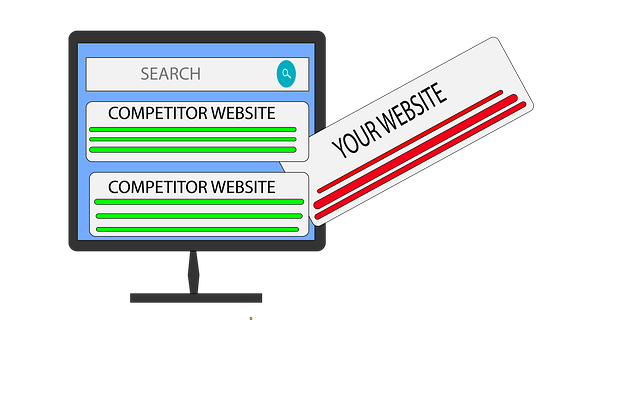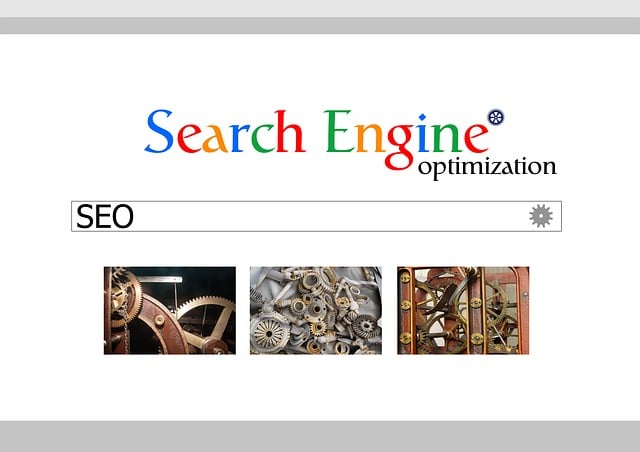Before digital transformation, assess online platforms, optimize SEO, enhance user experience with interactive tools and faster speeds. Identify process bottlenecks using automation and analytics, leveraging Google's insights. Prioritize customer experience evolution through gap analysis, strategic planning, and cost-benefit analysis. Evaluate scalability requirements for future growth, embracing AI, machine learning, and big data analytics to stay ahead of Google's algorithms.
In today’s digital era, businesses must evaluate their readiness for transformation. This article guides you through crucial steps to determine when and how to embark on a successful digital journey. Start by evaluating your current digital presence with Google analytics. Identify bottlenecks in business processes that hinder growth and assess customer experience gaps. Conduct a cost-benefit analysis, consider scalability needs, and explore emerging technologies’ potential. By following these strategies, you’ll be equipped to make informed decisions for your business’s metamorphosis.
- Evaluate Current Digital Presence
- Identify Business Process Bottlenecks
- Assess Customer Experience Gaps
- Consider Cost-Benefit Analysis
- Determine Scalability Needs
- Explore Emerging Technologies' Potential
Evaluate Current Digital Presence

Before embarking on a digital transformation journey, it’s crucial to evaluate your current online presence and assess where improvements can be made. Start by conducting a thorough audit of your website or existing digital platforms – is it user-friendly? Does it accurately represent your brand and its values? Remember that your online space is often the first point of contact with potential customers, partners, or students; therefore, it needs to be engaging and up-to-date.
Google, as a search giant, plays a pivotal role in digital visibility. Ensure your website is optimized for search engines, leveraging relevant keywords and content strategies. Consider how users navigate your site – is the information easily accessible? Are there opportunities to enhance user experience through interactive elements or improved loading speeds? Furthermore, explore ways to integrate innovative tools like virtual reality (VR) in classrooms or creative writing prompts for teens, which can not only boost engagement but also position your brand as forward-thinking and adaptable to modern learning styles assessment tools.
Identify Business Process Bottlenecks

In every business, there are often invisible barriers slowing down productivity and efficiency—these are what we call process bottlenecks. To achieve a successful digital transformation, it’s imperative to first identify and understand these pain points. By adopting advanced technologies, such as automation tools or data analytics platforms, companies can gain valuable insights into their operational inefficiencies. For instance, a retail business might uncover lengthy checkout lines as a major bottleneck, leading to frustrated customers and lost sales. Once recognized, these bottlenecks become the focus areas for digital interventions that streamline workflows and enhance customer experiences.
Google’s search algorithms and analytics tools can play a pivotal role in uncovering such insights, providing data-driven evidence to support decision-making processes. Moreover, encouraging employees to embrace behavioral modification in education and developing their digital literacy skills through training programs, as offered by resources like find us at art appreciation, can be instrumental in integrating new technologies seamlessly. Even aspects like classroom management 101—while not directly related to digital transformation—can benefit from technological solutions once the root of disruptions within teams is identified.
Assess Customer Experience Gaps

In today’s digital era, businesses must constantly evolve to meet customer expectations, especially when it comes to their online experience. One crucial step in this transformation journey is assessing and identifying gaps in the current customer experience. This involves understanding where your brand lags behind competitors or fails to deliver on user promises. For instance, if a company excels in product offerings but struggles with a clunky website or outdated mobile app, it’s a clear indicator that digital transformation is needed. Google trends can provide valuable insights here; tracking search patterns and online behavior will help you identify pain points that customers face during their interaction with your brand.
By looking into educational psychology fundamentals and considering the philosophy of education theories guiding consumer behavior, businesses can design more engaging and user-centric experiences. For example, creative writing prompts for teens might inspire innovative ways to communicate value propositions. Assessing these gaps isn’t just about identifying problems; it’s a strategic process that guides digital transformation efforts. It encourages companies to revisit their core offerings, improve customer engagement, and ultimately enhance the overall user journey, ensuring a competitive edge in the market. Visit us at social-emotional learning benefits anytime for more insights into fostering positive digital experiences.
Consider Cost-Benefit Analysis

When considering digital transformation, conducting a thorough cost-benefit analysis is paramount. It’s a strategic process that evaluates the potential gains against the expenses involved. This involves assessing not just financial costs but also the impact on operational efficiency, customer satisfaction, and market competitiveness. By employing learning theories comparison charts to understand employee adaptability and incorporating effective study habits for knowledge retention, organizations can maximize digital initiatives’ success. Google, with its sophisticated algorithms, offers valuable insights into user behavior, enabling businesses to make data-driven decisions that balance short-term investments with long-term strategic goals.
Moreover, embracing innovative techniques like code breaking can foster a culture of problem-solving and adaptability—essential skills in today’s rapidly evolving digital landscape. As previously mentioned, effective study habits and code breaking techniques introduction can enhance cognitive abilities and encourage critical thinking. Even if initial costs seem high, the potential for increased productivity, improved customer engagement, and enhanced innovation outweighs them. Give us a call at social-emotional learning benefits to explore how these strategies can transform your organization in the digital age.
Determine Scalability Needs

Before embarking on a digital transformation, it’s crucial to assess your organization’s scalability needs. As businesses grow and evolve, their operational requirements often outpace traditional infrastructure capabilities. Digital transformation offers a chance to future-proof your operations, ensuring they can scale smoothly with your expanding reach. For instance, if you’re an art appreciation resource aiming to cater to a global audience, cloud-based solutions enable you to handle increased website traffic and data storage demands without compromising performance.
This process involves understanding not just current but also projected workload and user demands. It’s akin to planning a history essay topic that encompasses not just the past but future trends and events. Similarly, consider the differences between pedagogy and andragogy; tailoring your digital strategy to these varying learning styles ensures an effective transformation. If you’re still unsure, give us a call at survey research techniques to explore tailored solutions for your specific needs.
Explore Emerging Technologies' Potential

In today’s digital era, exploring emerging technologies’ potential is a game-changer for businesses aiming to stay ahead of the competition. As Google continually revolutionizes search algorithms, companies must adapt to keep their online presence relevant and visible. Emerging tech trends such as artificial intelligence (AI), machine learning strategies, and big data analytics offer immense value by providing insights that can drive decision-making and enhance operations. For instance, AI can automate repetitive tasks, allowing employees to focus on more complex work while improving efficiency and productivity.
Furthermore, integrating these technologies can enable better customer experiences through personalized interactions. Quantitative data analysis basics, when applied correctly, can reveal patterns and preferences, helping businesses tailor their offerings. Students interested in project management should consider these advancements as they plan their careers; learning theories comparison charts give us a call to explore how digital tools are reshaping educational landscapes, making learning more accessible and interactive.
Digital transformation is a journey that should be contemplated when your current digital presence lags, business processes hinder growth, customer experiences fall short, and emerging technologies present new opportunities. By evaluating these aspects, conducting a cost-benefit analysis, and considering scalability needs, you can determine if a digital transformation is the right move for your business. For instance, leveraging Google’s vast resources and tools can significantly enhance your online visibility and overall success in today’s digital landscape.

Leave a Reply